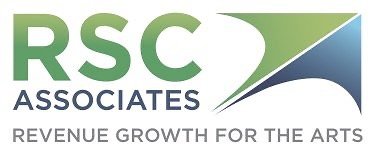WHY INDIVIDUAL GIVING IS THE ANSWER
With Catherine Heitz New
Today we’re talking about universal challenges and solutions in the current environment. Let’s start with the sobering reality:
Relief funds are a thing of the past. Expenses keep climbing. Ticket sales are unpredictable. And public funding is shifting.
It’s no wonder so many organizations are feeling paralyzed when it comes to fundraising.
Listen today for why individual giving still reigns supreme when it comes to driving sustainable revenue growth.
Read the full transcript below or click the button to listen.
FULL TRANSCRIPT OF THE PODCAST
Today we’re talking about universal challenges and solutions in the current environment. Let’s start with the sobering reality:
Relief funds are a thing of the past.
Expenses keep climbing.
Ticket sales are unpredictable.
And public funding is shifting.
Layer on top of that, the broader economic and national volatility of this year, and it’s no wonder so many organizations are feeling paralyzed when it comes to fundraising.
And when we zoom in, we see three universal challenges across the field, regardless of budget or staff size.
First: More dollars are coming from fewer donors. While some are bucking this trend, a growing percentage of the field is seeing their donor base take a hit. But fear not – strong fundraising programs are also seeing their most loyal donors give more – AND DRIVE GROWTH. From the Dot.com bubble to the Great Recession and pandemic, this is a familiar philanthropy trend during unpredictable times.
Second: Hiring is hard. From executives to entry-level development staff, it’s taking longer, costing more, and proving difficult to find and keep the right people.
And third: Let’s be clear, this is not 2020. Back then, there was a national rallying cry to support nonprofits. Relief funds, bailouts, and urgent local campaigns helped many stay afloat. In 2025, that landscape looks very different. There’s no broad infusion of cash, no call-to-action inspiring communities to rally in the same way.
So, let’s focus in on that first point: more dollars from fewer donors.
Now, you might be thinking – hold on. If fewer donors are giving more, why is the title of this podcast “Why Individual Giving is the Answer”? Shouldn’t we be prioritizing corporate, foundation, or other institutional dollars instead?
The answer is: No. Individual giving still reigns supreme when it comes to driving sustainable revenue growth.
Here’s why.
First, the runway to a “yes” is shorter. With individuals, you’re typically dealing with one, maybe two, decision-makers rather than multiple layers of Boards, committees, or red tape. That means less time, fewer hoops, and a clear path to a gift.
Second, the “yes” is based more on relationship than metrics. Institutional donors rely on rating systems, competitive criteria, and benchmarks that may not even be relevant to your mission. Individuals, on the other hand, are driven by how they feel about you and the connection they have with your work.
Third, there’s simply a bigger pool to fish in. There are far more individuals in your community than there are institutions. That makes the opportunity much greater.
And finally, more donors means more resilience. A diversified donor base spreads risk. If one or two donors step back, your program doesn’t collapse.
Need a little convincing on that last point? Let’s do the math.
Imagine you have one donor at $100,000. If you get them to increase by $5,000, it doesn’t really move the needle that much. Now, imagine you have ten donors each giving $10,000 (it’s the same total, $100,000). If even half of them increase their giving by $5,000, that’s now $25,000 of new revenue – five times the gain of the single big donor scenario.
That’s the power of individual giving. It’s not just about the dollars in the door today. It’s about building a broad, loyal base of support that grows with you and keeps you resilient in a changing world.
So, as you think about your fundraising priorities in the months ahead, don’t overlook the individuals in your community. They’re not only your greatest opportunity for growth, they’re your best safeguard against uncertainty.



